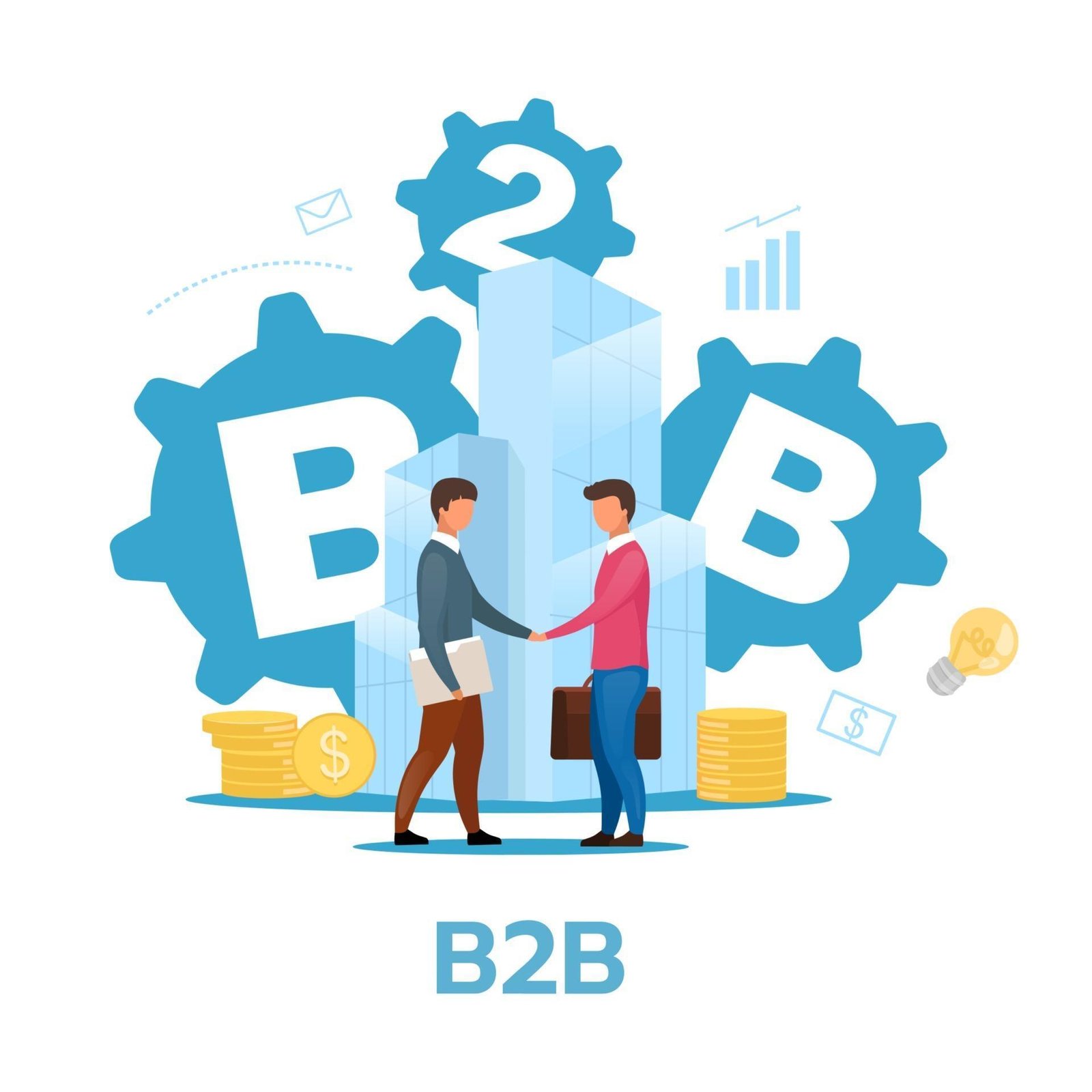Marketing in the B2B space can be challenging, but it’s essential for growth and success. Unlike B2C marketing, B2B requires a more strategic approach, focusing on building relationships, providing value, and demonstrating expertise. We will explore proven B2B marketing ideas that can help you grow your business. From leveraging content marketing to optimizing your digital presence, these strategies are designed to be highly actionable and effective.
Understanding Your Market
Identifying Your Ideal Customer
The first step in any successful B2B marketing strategy is understanding who your ideal customer is. This involves creating detailed buyer personas that include demographics, pain points, and decision-making processes.
Conduct market research, analyze your current customer base, and gather feedback to refine these personas. Knowing your ideal customer helps tailor your marketing efforts to their specific needs and preferences, making your campaigns more effective.
Analyzing Market Trends
Stay informed about the latest trends and changes in your industry. Subscribe to industry publications, attend conferences, and participate in webinars to stay updated.
Understanding market trends helps you anticipate changes and adjust your marketing strategies accordingly. This proactive approach ensures that your business remains relevant and competitive.
Building a Strong Online Presence
Optimizing Your Website
Your website is often the first point of contact for potential clients. Ensure it is professional, easy to navigate, and optimized for search engines. Use clear and concise language, high-quality images, and intuitive design.
Include key information such as your services, case studies, testimonials, and contact details. Regularly update your content to keep it fresh and relevant.
Developing a Comprehensive Content Strategy
A well-rounded content strategy is essential for establishing a strong online presence. Start by identifying the key topics and themes that are relevant to your target audience. Develop a content calendar that outlines the types of content you will create, such as blog posts, whitepapers, infographics, and videos.
Ensure that your content is diverse, covering different stages of the buyer’s journey from awareness to decision-making. Regularly update your content to keep it fresh and engaging, and use analytics to track performance and adjust your strategy as needed.
Leveraging SEO
Search engine optimization (SEO) is crucial for improving your website’s visibility. Conduct keyword research to identify the terms your target audience is searching for and incorporate these keywords into your website content.
Focus on both on-page SEO, such as meta tags and headers, and off-page SEO, like backlinks from reputable sites. A well-optimized website can drive organic traffic and generate leads.
Implementing Advanced SEO Techniques
Beyond basic SEO practices, advanced techniques can further boost your online presence. Use advanced keyword research tools to identify high-value keywords and optimize your content accordingly.
Focus on acquiring high-quality backlinks from reputable sources to improve your site’s authority. Implement technical SEO practices, such as improving site speed, using HTTPS, and optimizing for mobile devices.
Regularly audit your website to identify and fix any SEO issues. Advanced SEO techniques can enhance your visibility in search engine results and drive more organic traffic.
Optimizing for Voice Search
As voice search becomes more prevalent, optimizing your website for voice queries is increasingly important. Focus on long-tail keywords and natural language phrases that people are likely to use in voice searches.
Ensure your content answers common questions clearly and concisely. Structured data and schema markup can help search engines understand your content and improve your chances of appearing in voice search results.
Optimizing for voice search enhances your visibility and accessibility in this growing search medium.
Utilizing Content Marketing
Content marketing is one of the most effective ways to attract and engage your audience. Create valuable and relevant content that addresses the pain points and challenges of your target customers.
This can include blog posts, whitepapers, eBooks, and case studies. Share your content through your website, email newsletters, and social media channels to reach a broader audience.
Providing high-quality content establishes your business as an authority in your industry and builds trust with potential clients.
Social Media Strategies
Choosing the Right Platforms
Not all social media platforms are suitable for B2B marketing. Focus on platforms where your target audience is most active. LinkedIn is a prime choice for B2B marketers due to its professional nature.
Twitter and Facebook can also be effective for sharing content and engaging with your audience. Understand the strengths of each platform and tailor your content accordingly.
Engaging with Your Audience
Social media is not just about posting content; it’s about engaging with your audience. Respond to comments, participate in discussions, and join relevant groups or communities.
Share industry news, insights, and updates to position your business as a thought leader. Hosting live Q&A sessions or webinars on social media can also foster engagement and provide value to your audience.
Email Marketing Tactics
Building a Quality Email List
A quality email list is a valuable asset for any B2B business. Collect email addresses through your website, social media, and at industry events. Offer valuable incentives such as free eBooks, exclusive content, or webinars in exchange for email sign-ups.
Ensure that your list is segmented based on criteria such as industry, job title, and engagement level to send targeted and relevant emails.
Crafting Compelling Emails
Create email content that is informative, engaging, and personalized. Use clear and compelling subject lines to increase open rates. In the body of the email, provide valuable insights, industry news, and updates about your products or services.
Include a clear call to action, whether it’s to download a resource, schedule a demo, or contact your sales team. Regularly analyze your email campaigns’ performance and adjust your strategies based on the results.
Segmentation for Personalization
Segmentation is a powerful tactic to enhance the effectiveness of your email marketing campaigns. By dividing your email list into smaller, more targeted groups based on criteria such as industry, job role, and previous interactions, you can send highly relevant content to each segment.
Personalization goes beyond using the recipient’s name; it involves tailoring the email content to their specific needs and interests. Use data from past interactions, purchasing behavior, and engagement history to create customized email content that resonates with each segment.
Personalized emails can significantly increase open rates, click-through rates, and conversions.
Automating Drip Campaigns
Drip campaigns are automated sequences of emails that nurture leads through the sales funnel over time. These campaigns are triggered by specific actions or time intervals, delivering the right message at the right time.
Start with a welcome series for new subscribers, introducing your brand and offerings. Follow up with educational content, case studies, and testimonials to build trust and demonstrate value.
As leads engage with your content, send targeted emails that address their specific pain points and offer solutions. Drip campaigns keep your audience engaged and move them closer to making a purchase decision.
Leveraging Behavioral Triggers
Behavioral triggers are actions taken by recipients that can prompt specific follow-up emails. These triggers include website visits, content downloads, webinar registrations, and email opens. Use marketing automation tools to track these behaviors and set up automated responses.
For example, if a recipient downloads a whitepaper on a particular topic, send them related content or an invitation to a webinar on the same subject. Behavioral triggers ensure your emails are timely and relevant, increasing the likelihood of engagement and conversion.
Crafting Compelling Subject Lines
The subject line is the first thing recipients see and significantly impacts open rates. Crafting compelling subject lines that grab attention and entice recipients to open the email is crucial. Use curiosity, urgency, and personalization to make your subject lines stand out.
A/B testing different subject lines can help you determine what resonates best with your audience. Keep subject lines clear and concise, and avoid using spammy language or excessive punctuation, which can trigger spam filters.
Creating Interactive Email Content
Interactive email content can enhance engagement and provide a more immersive experience for recipients. Incorporate elements such as polls, surveys, quizzes, and clickable images to encourage interaction.
Interactive content not only captures attention but also provides valuable insights into your audience’s preferences and behavior. For example, include a survey asking recipients about their biggest challenges, and use the responses to tailor future email content.
Interactive emails can boost engagement and make your campaigns more dynamic and responsive.
Leveraging Account-Based Marketing (ABM)

Identifying Key Accounts
Account-Based Marketing (ABM) is a highly targeted approach that focuses on specific high-value accounts. Start by identifying key accounts that have the potential for significant revenue or strategic value.
These could be large enterprises, industry leaders, or businesses that align well with your offerings. Use criteria such as company size, industry, and previous engagement to select these accounts.
Personalizing Outreach
Once you’ve identified your key accounts, create personalized marketing campaigns tailored to their specific needs and challenges. Research each account thoroughly to understand their business goals, pain points, and decision-makers.
Develop custom content, such as whitepapers, case studies, and presentations, that directly address their needs. Personalized outreach can include targeted emails, direct mail, and personalized landing pages.
Aligning Sales and Marketing
For ABM to be effective, your sales and marketing teams must work closely together. Ensure both teams are aligned on account selection, messaging, and goals. Regularly communicate and share insights to refine your strategies.
Use CRM and marketing automation tools to track interactions and measure the success of your campaigns. Collaboration between sales and marketing ensures a cohesive and effective approach to targeting key accounts.
Hosting and Participating in Industry Events
Organizing Webinars and Virtual Events
Hosting webinars and virtual events is an excellent way to showcase your expertise and engage with your audience. Choose topics that are relevant to your target customers and provide valuable insights or solutions to their challenges.
Promote your events through your website, email marketing, and social media channels. During the event, engage with participants through Q&A sessions and interactive polls. Follow up with attendees post-event to continue the conversation and nurture leads.
Participating in Trade Shows and Conferences
Attending industry trade shows and conferences provides opportunities to network with potential clients and partners. Set clear objectives for each event, such as generating leads, building brand awareness, or establishing thought leadership.
Use engaging booth displays, presentations, and promotional materials to attract attendees. Collect contact information and follow up promptly after the event to maintain the momentum and convert leads into clients.
Utilizing Video Marketing
Creating Educational Videos
Video content is highly engaging and can effectively communicate complex information. Create educational videos that address common challenges or questions your target audience may have.
This could include how-to guides, product demos, or expert interviews. Share these videos on your website, YouTube, and social media platforms to reach a wider audience and establish your brand as an authority in your field.
Leveraging Customer Testimonials
Customer testimonials and case study videos provide social proof and build credibility. Ask satisfied clients to share their experiences and highlight the benefits they’ve gained from your products or services.
Showcase these testimonials on your website, in email campaigns, and on social media. Authentic and relatable customer stories can significantly influence potential clients’ decision-making processes.
Implementing Data-Driven Marketing
Utilizing Analytics Tools
Data-driven marketing involves using data to make informed decisions and optimize your marketing efforts. Utilize analytics tools such as Google Analytics, CRM systems, and marketing automation platforms to track and analyze key metrics.
Monitor website traffic, conversion rates, email engagement, and social media performance to gain insights into what’s working and what needs improvement. Regularly review your data and adjust your strategies based on these insights.
Personalizing Marketing Efforts
Leverage data to personalize your marketing efforts. Use customer data to segment your audience and create targeted campaigns. Personalize emails, website content, and advertisements to address the specific needs and interests of different segments.
Personalized marketing enhances engagement and increases the likelihood of conversions.
Strengthening Partnerships and Collaborations

Building Strategic Partnerships
Forming strategic partnerships with complementary businesses can expand your reach and create new opportunities. Identify potential partners whose offerings align with your own and offer mutual benefits.
Collaborate on co-branded content, joint webinars, or cross-promotional campaigns. Strategic partnerships can provide access to new markets and enhance your credibility through association with reputable brands.
Engaging in Co-Marketing Initiatives
Co-marketing involves collaborating with another company to promote a product or service. This can include joint content creation, shared events, or co-hosted webinars.
Co-marketing allows you to leverage each other’s audiences and resources, increasing exposure and generating leads. Ensure that both parties benefit equally and have clear objectives and responsibilities.
Enhancing Customer Relationships
Providing Excellent Customer Service
Exceptional customer service is crucial for retaining clients and generating referrals. Ensure your customer support team is well-trained and equipped to handle inquiries and issues promptly and effectively.
Use CRM systems to track customer interactions and provide personalized support. Satisfied customers are more likely to become repeat clients and advocates for your business.
Developing Customer Loyalty Programs
Implementing customer loyalty programs can incentivize repeat business and strengthen relationships. Offer rewards such as discounts, exclusive content, or early access to new products for loyal customers.
Regularly communicate with your customers through newsletters and personalized offers to keep them engaged and informed. A well-executed loyalty program can enhance customer retention and drive long-term growth.
Leveraging Advanced Digital Marketing Tactics
Implementing Marketing Automation
Marketing automation tools can streamline your marketing efforts and improve efficiency. Use platforms like HubSpot, Marketo, or Pardot to automate repetitive tasks such as email campaigns, social media posting, and lead nurturing.
Set up workflows that trigger specific actions based on user behavior, such as sending a follow-up email after a website visit or a personalized offer after a download. Automation ensures timely and relevant communication, freeing up your team to focus on strategy and creativity.
Utilizing Retargeting Campaigns
Retargeting campaigns are an effective way to re-engage prospects who have shown interest in your products or services but have not yet converted. Use tracking pixels on your website to capture visitor data and create retargeting ads on platforms like Google Ads and Facebook.
These ads remind visitors of your offerings and encourage them to return and complete their purchase or inquiry. Retargeting can significantly increase conversion rates by keeping your brand top-of-mind.
Content Syndication and Guest Posting
Expanding Reach Through Syndication
Content syndication involves republishing your content on third-party websites to reach a broader audience. Identify reputable industry sites, online magazines, and platforms that accept syndicated content.
Ensure your articles include backlinks to your website to drive traffic and improve SEO. Syndication can boost your content’s visibility and establish your brand as a thought leader in your industry.
Guest Posting for Authority Building
Guest posting on reputable blogs and websites can enhance your credibility and reach new audiences. Identify blogs and publications that cater to your target audience and pitch relevant topics that showcase your expertise.
Include a bio and links to your website or social media profiles to drive traffic and build your personal and brand authority. Consistent guest posting can establish you as a thought leader and attract potential clients.
Developing an Integrated Marketing Strategy
Combining Online and Offline Efforts
An integrated marketing strategy ensures consistency across all channels, both online and offline. Coordinate your digital campaigns with offline efforts such as trade shows, print ads, and direct mail.
Ensure your messaging and branding are consistent across all touchpoints. For example, promote your trade show presence through email and social media, and follow up with attendees using digital channels. An integrated approach maximizes reach and reinforces your brand message.
Aligning Sales and Marketing
For a seamless customer experience, align your sales and marketing teams. Use shared tools and data to track and nurture leads from initial contact through to sale.
Implement a lead scoring system to prioritize high-quality leads and ensure timely follow-up. Regular meetings and communication between sales and marketing teams can foster collaboration and ensure both are working towards common goals.
Alignment improves lead conversion and enhances customer satisfaction.
Enhancing Your Value Proposition
Differentiating Your Offerings
In a competitive B2B market, a strong value proposition sets you apart from the competition. Clearly articulate the unique benefits and value your products or services provide.
Highlight what makes your offerings different and why clients should choose you over competitors. This could be superior quality, innovative features, exceptional customer service, or competitive pricing.
A compelling value proposition attracts and retains clients.
Showcasing Success Stories
Case studies and success stories demonstrate your ability to deliver results. Develop detailed case studies that outline the challenges faced by your clients, the solutions you provided, and the measurable outcomes achieved.
Use these stories in your marketing materials, on your website, and during sales presentations. Real-world examples of your success build credibility and trust with potential clients.
Leveraging Analytics and Feedback

Analyzing Performance Metrics
Regularly analyze your marketing performance to identify strengths and areas for improvement. Use tools like Google Analytics, CRM systems, and social media insights to track key metrics such as website traffic, conversion rates, and engagement levels.
Review your campaigns’ effectiveness and adjust your strategies based on the data. Continuous analysis helps you refine your approach and maximize your return on investment.
Gathering Customer Feedback
Customer feedback provides valuable insights into your clients’ needs and satisfaction levels. Implement systems to regularly gather feedback, such as surveys, interviews, and feedback forms.
Analyze the feedback to identify trends and areas for improvement. Use this information to enhance your products, services, and customer experience.
Engaging with your customers and acting on their feedback can improve retention and foster loyalty.
Investing in Employee Development
Training and Development Programs
Your employees are your greatest asset. Investing in their development can enhance their skills and contribute to your business’s success. Implement regular training programs to keep your team updated on industry trends, new technologies, and best practices.
Encourage continuous learning and professional growth through workshops, courses, and certifications. Well-trained employees are more productive, motivated, and capable of driving your business forward.
Encouraging Collaboration and Innovation
Foster a culture of collaboration and innovation within your organization. Encourage your team to share ideas and work together to solve problems. Create an environment where innovation is valued and rewarded.
Regular brainstorming sessions, cross-functional projects, and open communication can lead to creative solutions and improvements.
A collaborative and innovative culture drives growth and keeps your business competitive.
Wrapping it up
Growing a B2B business in today’s competitive landscape requires a strategic and multifaceted approach. By leveraging proven marketing ideas, you can effectively reach and engage your target audience, build strong relationships, and drive sustainable growth.
From optimizing your online presence and utilizing social media to crafting personalized email campaigns and implementing advanced digital marketing tactics, each strategy plays a crucial role in your overall success.
Understanding your market and customer needs, staying updated with industry trends, and continuously refining your strategies based on data and feedback are essential. A focus on creating value, building trust, and delivering exceptional customer experiences will set your business apart and foster long-term loyalty.
As you implement these strategies, remember that consistency, innovation, and adaptability are key. The marketing landscape is ever-evolving, and staying ahead requires a commitment to continuous learning and improvement. By adopting a customer-centric approach and leveraging the right tools and techniques, your B2B business can thrive and achieve its growth objectives.
READ NEXT:
- Social Media Marketing Ideas to Boost Your Business
- Festive and Fun Social Media Content Ideas for December
- Gratitude and Growth: Thanksgiving Social Media Post Ideas for Businesses
- Creative Design Ideas to Elevate Your Social Media
- Exploring the Impact of Social Media on Mental Health






















Comments are closed.